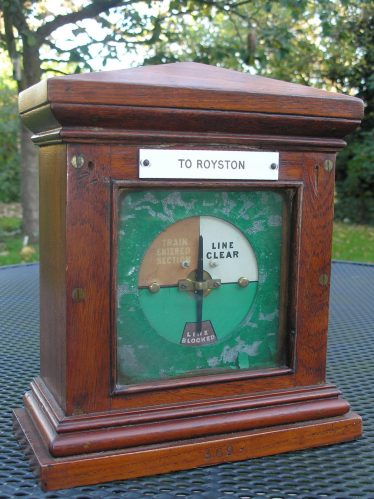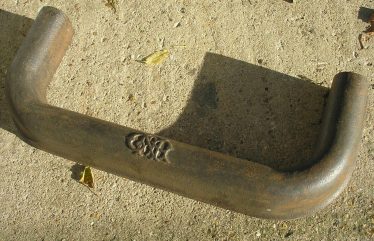The Signal Box







The signal box stood on the ‘Up’ side of the railway opposite the goods yard. There were a number of points both in the yard but also linking the two main railway lines to facilitate trains passing from either line in and out of the goods yard. These were all controlled from the signal box.
From a plan drawing of the Goods Yard made by Meldreth signalman Sid Chamberlain sometime in the mid C20th, we know that the box had a 29 lever frame and that signaling was by an Absolute Block and Trolley Key Token System. There were two starting signals, Home and Distant.
The goods yard closed to rail traffic in 1964 and Meldreth signal box closed on Sunday 16th May 1965 which is the day that the goods yard ceased to be connected to the main line. All signalling equipment was recovered that weekend with all points disconnected and clipped out of use pending recovery. The block section was extended from Royston to Shepreth which remained like that until 1977 when Royston signal box was closed and replaced by King’s Cross signalling centre. Shepreth signal box was fringed with the signalling centre and auto signals were provided in the vicinity of Meldreth. Shepreth box finally closed in Feb 1983 when Cambridge signalling centre assumed responsibility for Meldreth and things became pretty much as they are now.
Meldreth signal box had been demolished by 1971. The bricks were used to build a large barn in the garden of a railway enthusiast (Mike Sharman) in Foxton.
Signal Box ‘Peggers’
We are indebted to Mike Sharman for the two photographs below showing the peggers that were in use in Royston (or Shepreth) and Meldreth signal boxes up to the time of the demolition of the Meldreth signal box.
A pegger is an indicator which tells the signalman the status of the line between himself and the two stations up and down the line. A three position indicator shows whether the railway track between the two stations is: Line Blocked (the normal indication), Line Clear or if there was a Train On Line. This became the standard indicator after 1876. The signal man would move the handle on his pegger to transmit the status of the line between his station and the one up or down the line. The receiving pegger in the other station would move to the appropriate segment informing the signalman there of the line status.
These instruments used the same kind of handle as the speaking telegraph instrument, which had to be held over in its indication by a brass peg on a chain. Hence the slang term “pegger”.and signalmen sometimes talked of “pegging over” the indication.
The Meldreth ‘pegger’ on the right would have been located in either the Royston or Shepreth signal box to indicate the status of the line to Meldreth.
The Royston ‘pegger’ (right) was actually installed in the Meldreth signal box to show the status of the line to Royston.
This was a receiving pegger, i.e. it simply showed the status of the line to Royston as transmitted by the Royston signalman moving the handle on his transmitting pegger to the appropriate position.





Comments about this page
Very interesting information. Thanks to all who contributed.
Meldreth Railway Station (Late 1940s)
Meldreth had a busy goods yard handling fruit, sugar beet and bags of potatoes, etc. The Atlas Stone Company would send a lot of merchandise away from there. There was a signal box with two signalmen.
The Puffing Billy line took fibre and merchandise to the Atlas from the bottom of Station Hill.
A horse was permanently on hand to shunt the wagons into place for the 5pm goods train.
Mail used to come by train and the postman would collect the mail from the train in the morning. It was sent away late afternoon.
A siding was built in 1942 to receive American war wounded who were taken to the American camp. The siding is still there to this day.
.
The photograph of my father Sid Fost was taken in Shepreth Signal Box, not Meldreth. I worked at Meldreth Station as a relief booking clerk.
Thanks Enid, I’ve changed the caption to Shepreth.
Add a comment about this page